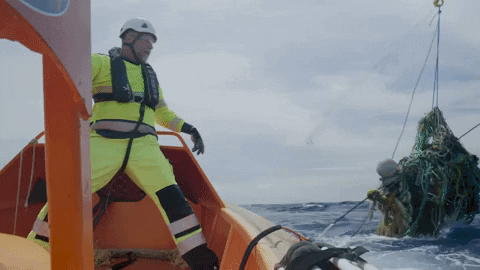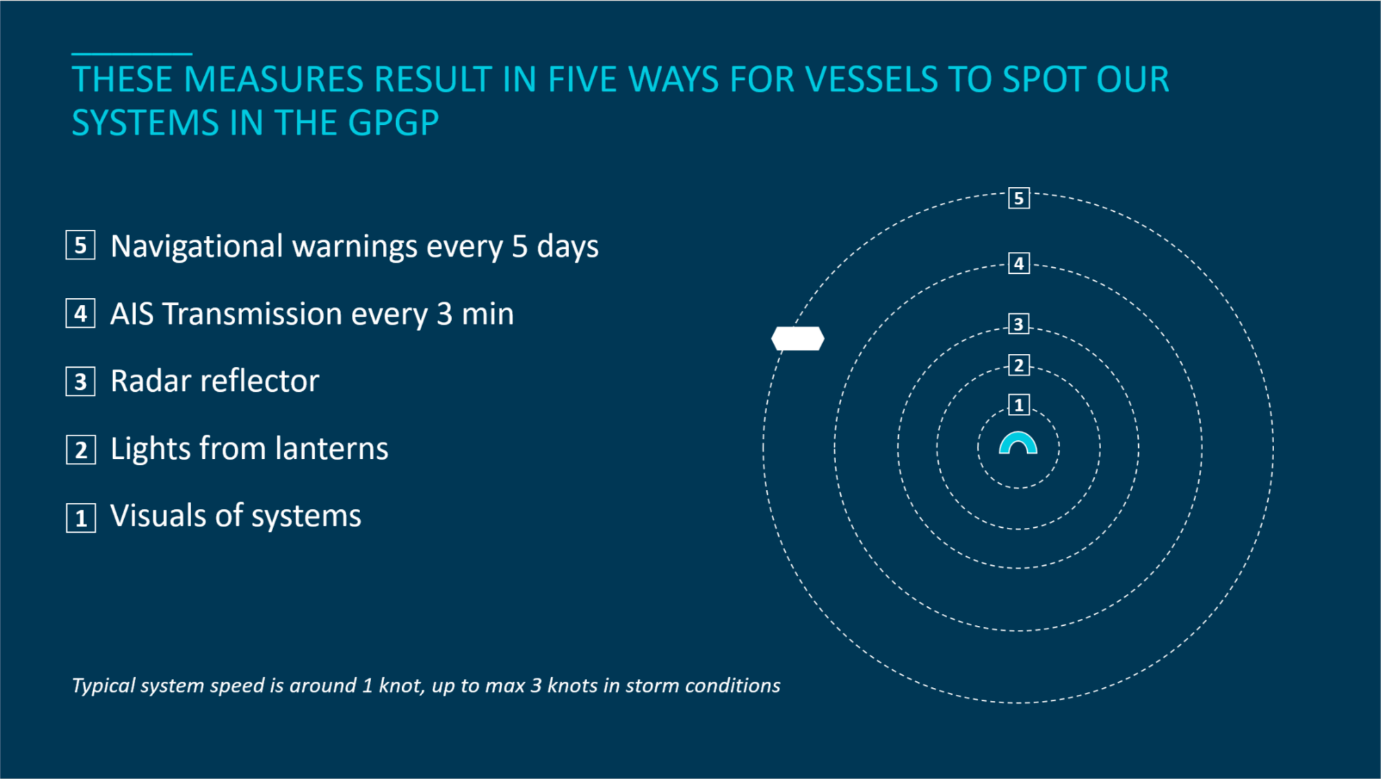The ocean garbage patches are vast (three times the size of France) and vessels crossing through it are rare – on average there are less than five within its boundaries. Coupled with the relatively small size of the cleanup systems, the chances of a vessel interacting with a system are minor.
But minor does not mean impossible. Hence it is crucial that we fit our cleanup systems with safety equipment, as is required for any other oceangoing vessel.
To prevent collisions, we defined five ‘safety rings’ around the system through which we aim to do everything possible to notify vessels of our systems’ whereabouts. Navigational warnings will be broadcast through the Notice to Mariners with current system location information. Additionally, the systems are fitted with many detection capabilities so that vessels can avoid our systems. For instance, our first cleanup system is fitted with nine light masts that rise four meters above the waterline, AIS beacons and radar reflectors.
We will also continuously monitor the health and whereabouts of our systems 24/7 through onboard cameras and GPS trackers. We will be able to identify when the system drifts too close to the edge of the patch (where the vessel traffic density is higher), after which we can engage in a manual correction of the system’s trajectory, towing it back to the center of the patch.

